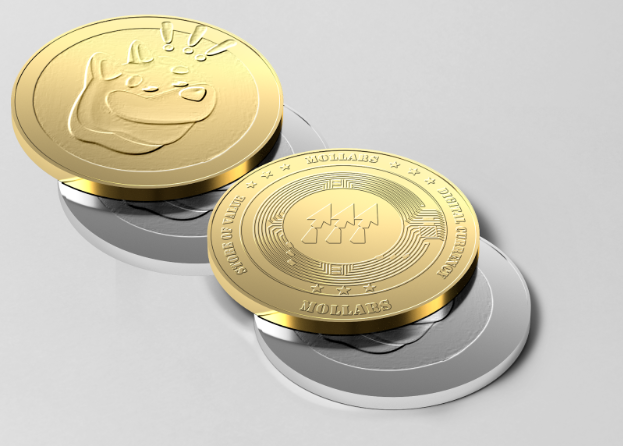
Bonk (BONK) has been making significant strides lately, showcasing a remarkable 16% increase in its trading value since yesterday. However, despite the positive performance of the token, a swath of holders from the BONK coin community is re-allocating a portion of earnings to a new token presale on the Ethereum Blockchain.
Known as Mollars, the project has attracted the interest of a wide variety of communities, including Shiba Inu, Tether, and Bonk Inu holders, signaling a shift in the market’s focus to a new token with the ability to become a store-of-value on the Ethereum Blockchain. As Bonk enjoys its recent surge in value, investors are recognizing the potential of Mollars as an alternative investment opportunity.
Why Bonk Investors Are Buying $MOLLARS
Despite Bonk (BONK) thriving on the Solana blockchain, a significant portion of its investors actively engage with the Ethereum blockchain through wrapped Bonk (wBONK). This tokenization allows Bonk investors to participate in Ethereum-based activities, including decentralized finance (DeFi) and non-fungible token (NFT) markets. Given this dual blockchain involvement, Bonk investors are now turning to Mollars as an opportunity to diversify their holdings while staying within the Ethereum ecosystem.
Mollars, positioned as a store-of-value token akin to Bitcoin but without its hefty transaction fees, presents an ideal asset for Bonk investors seeking to safeguard their assets on the Ethereum blockchain. With its deflationary tokenomics and potential for growth, Mollars offers a promising alternative investment avenue for those familiar with Bonk’s volatility and speculative nature.
By acquiring Mollars, Bonk investors gain exposure to a token with significant growth potential and secure their investments in a more stable and established blockchain environment. This strategic move highlights the adaptability and foresight of Bonk investors, who recognize the value of diversification and the importance of safeguarding their assets in a rapidly evolving crypto landscape.
As the migration continues, it underscores the growing synergy between different blockchain communities and the expanding opportunities for investors to explore new avenues of investment within the broader crypto ecosystem.
Why Mollars Is a Store of Value
Mollars distinguishes itself as a store of value token, aligning closely with the principles of Bitcoin but with distinct advantages. Built on the Ethereum blockchain, Mollars offers a solution to the escalating transaction fees plaguing Bitcoin. With transaction costs on average 80% lower than Bitcoin, Mollars provides a cost-effective alternative for investors seeking to preserve and grow their wealth.
Furthermore, Mollars boasts a limited token supply of just 10 million tokens, less than half of Bitcoin’s total supply. This scarcity, combined with its deflationary nature, positions Mollars as an attractive asset for long-term investment. Additionally, Mollars serves as a bridge for cross-blockchain transactions on its upcoming decentralized exchange, enhancing its utility and further solidifying its status as a store of value tokens with intrinsic value and practical use cases.
Mollars and Deflation
Mollars embodies deflationary characteristics driven by its limited token supply of only 10 million tokens, ensuring scarcity and increasing demand over time. As demand for Mollars grows, fueled by its utility as a store of value token and its role in cross-blockchain transactions, its supply remains fixed, leading to upward price pressure.
This inherent scarcity, coupled with rising demand, positions Mollars as a deflationary asset with the potential for long-term value appreciation. Investors are drawn to Mollars for its ability to retain value and serve as a hedge against inflation, making it an attractive investment in an ever-changing crypto landscape.
Mollars as a Decentralized Exchange
Mollars’ upcoming decentralized exchange (DEX), to be launched after ICO, marks a significant milestone in the crypto market, introducing a novel concept unseen before: a DEX with a native token as scarce as $MOLLARS.
Unlike traditional DEX tokens prone to hyperinflation, Mollars maintains a fixed supply of 10 million tokens. This scarcity, combined with the utility of Mollars as a store-of-value token, positions it to potentially grow over 100 times its current value as it gains utility within the DEX ecosystem.
Mollars offers a refreshing alternative, providing stability and resilience against market fluctuations. The concept of scarcity drives the value proposition of Mollars, as decreasing supply, coupled with increasing demand, tends to elevate its value over time. With the introduction of Mollars.CC, the native DEX built around Mollars, the token’s utility and liquidity are poised to expand further.
The new decentralized exchange not only enhances the utility of Mollars but should also boost its liquidity, crucial for the success of any cryptocurrency. By facilitating trading and liquidity provision, Mollars.CC will enable seamless transactions while ensuring price stability.
This integration of Mollars into a decentralized exchange ecosystem represents a significant advancement in the crypto landscape, offering investors a unique opportunity to participate in a scarce token economy while engaging in decentralized finance (DeFi) activities.
As more details emerge on the exchange and the ICO deadline (May) nears, it can be expected that other crypto groups begin following the BONK and SHIB token holders current trend — a notable migration to the Mollars token presale. Nearly 50% of the tokens available at the discounted initial coin offering price have been sold, acquired by thousands of different crypto wallets.





















